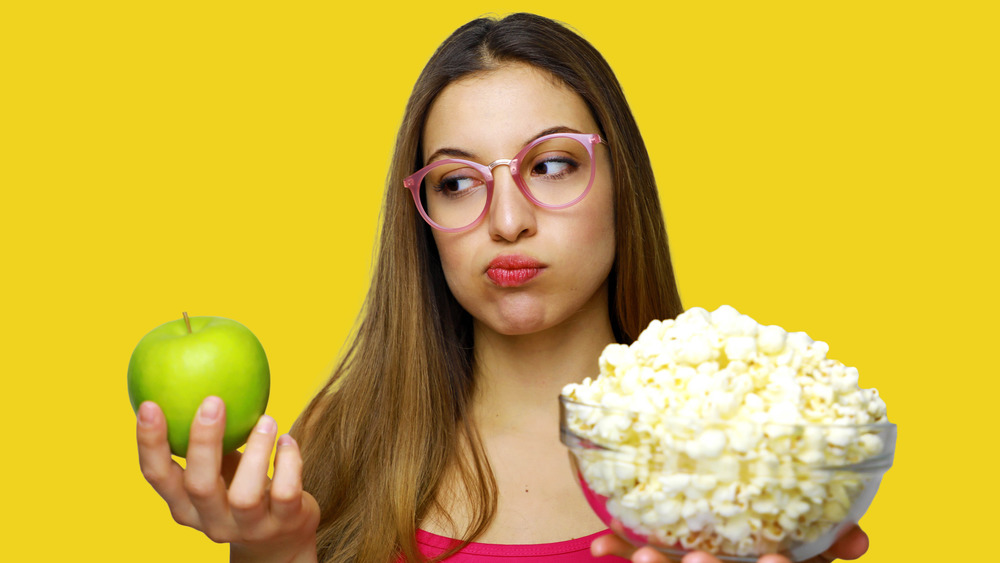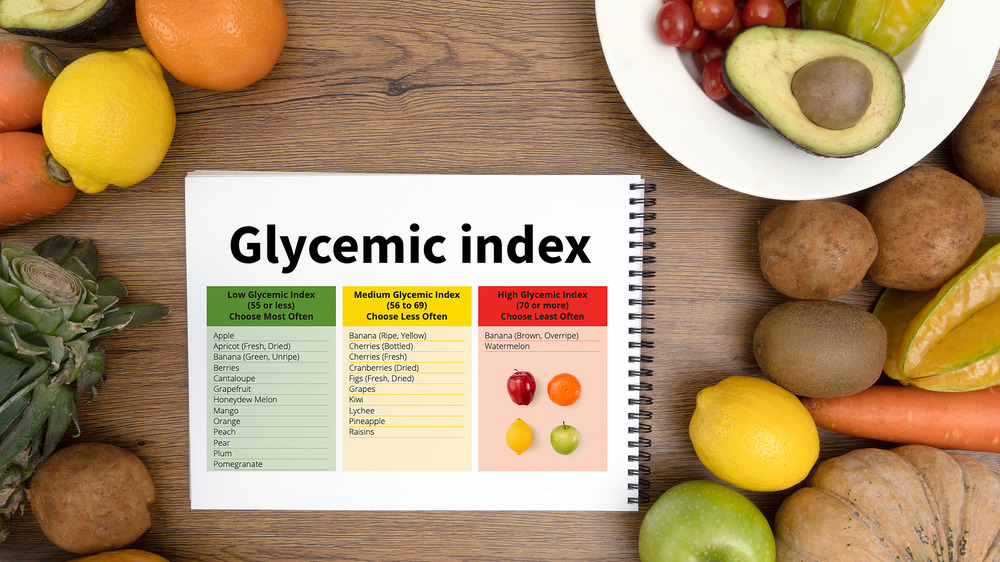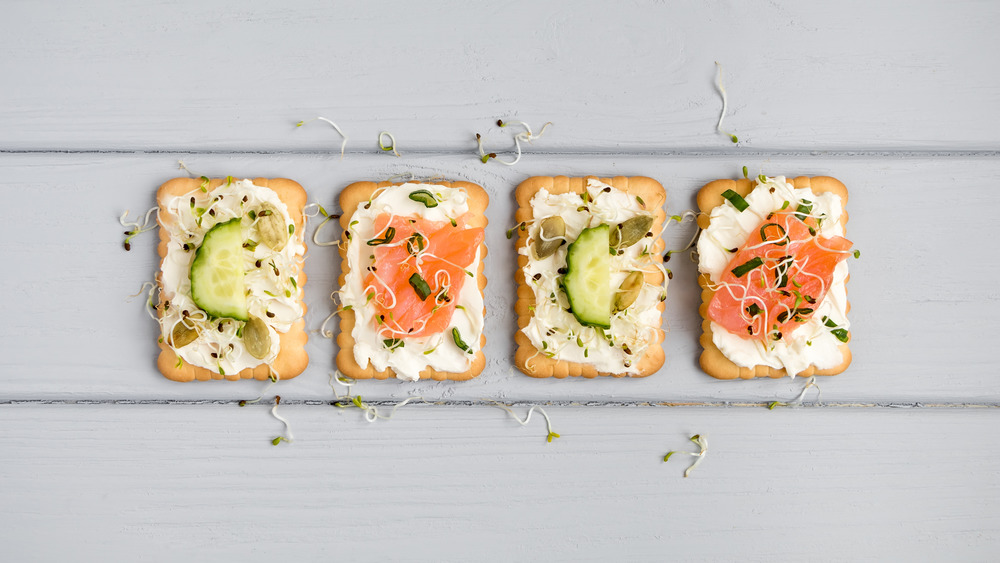What Happens To Your Body When You Eat High-Glycemic Vs Low-Glycemic Carbs
One of the diet "facts" that has been drummed into us over the past few decades can be boiled down to just two words: carbs bad. Some of the most popular diets these days include keto, paleo, Whole 30, and other carb-shunning eating plans. Well, as it turns out, healthy eating isn't quite as simple as that, and our bodies do need carbs to function (via NHS). Plus, it turns out there's such a thing as "good carbs" as well as "bad carbs."
So how do you tell the difference? One way to tell a good carb from a bad one, according to Harvard Health Publishing, is by using something called the glycemic index. In search of more info about high glycemic vs. low glycemic carbs, Mashed went to nutrition expert Dr. Brooke Scheller, a clinical nutritionist and Director of Nutrition at Freshly. Dr. Scheller told us that the way your body reacts to carbs all has to do with blood sugar levels — certain kinds of high-carb foods "trigger a spike in blood sugar that often is followed by a crash." She went on to explain that such a crash can result in "fatigue, irritability, and poor focus [and] also increase cravings for more high sugar or high carb foods to help raise our blood sugar back up." Ugh, sounds not good. But what kind of carbs are the culprits? High GI ones.
How does the glycemic index work?
The glycemic index measures the rate at which foods impact our blood sugar levels. Table sugar, Dr. Scheller tells us, has a glycemic index of 100, white bread and potatoes come in around 70 to 80, legumes typically range from 20 to 30, while leafy green veggies are very low GI at 5 to 15. "In general," she says, 'high fiber and high-nutrient dense foods have a healthier blood sugar response than more refined sources of carbs," meaning that they are less likely to result in a spike followed by an inevitable crash. Why would this be? One reason, she suggests, is that low GI foods are often higher in fiber, and this fiber may work to slow the increased levels of blood sugar.
Dr. Scheller also notes that "carbs are often not consumed in a vacuum," and advises pairing any higher GI carbs (or any carbs at all) with proteins, high-fiber foods, and healthy fats — an example of doing this would be topping a rice cake (high GI, because rice) with peanut butter. The protein, good fat, and, yes, fiber from peanut butter can help to balance the blood sugar, thus effectively lowering the glycemic impact, as well as keep us feeling more satisfied and full.
How you can improve your carb intake
In addition to checking out where the food you eat ranks on the glycemic index, you might also want to look up its glycemic load. This measurement, Dr. Scheller says, "combines ... the glycemic index with a standard serving of that food for a more accurate representation of the food's impact on your body."
So is it okay to eat what might be considered a high-carb meal as long as you stick to low GI carbs? Dr. Scheller says that usually low-carb meals will include only low GI carbs, and advises that, "It will be much easier to stick to a lower-carb diet if you place more focus on low-glycemic carbs since these also tend to help with satiety and feeling full for longer." So what types of foods should we be focusing on? Dr. Scheller counsels dining on legumes and veggies (non-starchy ones) and reducing the amount of refined carbs you consume. Don't forget to mix in a little good fat and protein, however, since not only can these help you feel better after eating carbs of any sort, but they should also add a little flavor.


